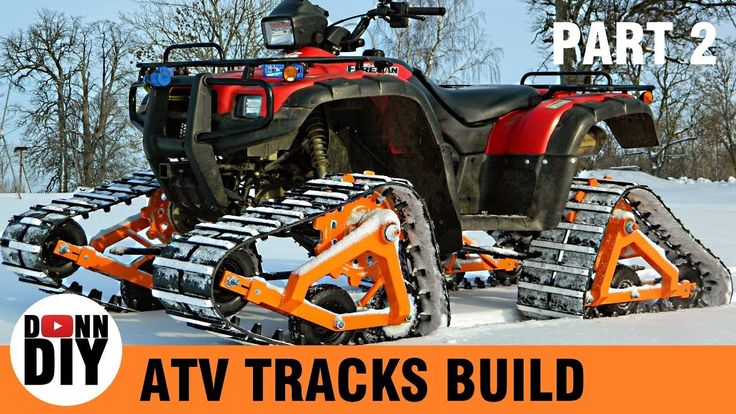Look, we know you’re probably not going to try to jump the Grand Canyon, and the odds of you needing to outrun an erupting volcano are pretty slim, but you still have to know how fast an ATV can go.
Being extraordinarily fast is a point of pride, and insane speeds are the ultimate adrenaline rush. So whether you’re getting chased by a bear, chasing down bandits, or just enjoying your weekend trail ride, ATV speed matters most.
But not all four wheelers are created equal. The max speed of ATVs varies depending on engine size, configuration, and a number of other factors. Let’s take a look.
Comparing Top Speed of Various ATV Engine Sizes (Stock)Your engine size is your biggest ATV speed limiter. Smaller engines go slower, bigger engines go faster. Simple right?
Not quite. As you’ll see, every vehicle has a speed limiter installed that artificially limits your ATV’s top speed.
Let’s go through some of the most common engines.
The 110cc ATV’s are designed to be youth models. They’re built for kids 10 and up. As such, their speed is limited to 30 MPH. The engine can theoretically reach higher speeds, but the ECU keeps it from going over 30.
Now we get to the group of engines that don’t hit their speed limiters. Most 450cc engines top out around 55 MPH. That’s plenty fast for a modest engine like this. You won’t hit this speed often either—just on the flat-out straightaways.
A 570cc engine gets another 10 MPH over the 450. If you’re looking for some real nail-biting ATV speed, this will get you there.
Now we’re getting into the blisteringly fast range. These engines do tend to hit their on-board ATV speed limiter of 75 MPH. But when you’re going that fast, it doesn’t really matter. With a max speed this high, you’ll be hitting speeds of 40–50 MPH regularly on trails.
With 700cc of displacement, this ATV can put out a lot of power. If speed is what you’re after, this quad will give it to you… at least until you hit the built-in rev limiter at around 75 MPH.
If speed is what you’re after, this quad will give it to you… at least until you hit the built-in rev limiter at around 75 MPH.For the fastest ATV top speed, you need to go with a quad rocking a 1000cc engine. With a limiter raised to 80 MPH, it stands to reason that if you want to go fast, there’s nothing better than a 1000cc ATV.
They jump off the line and get to high cruising speeds in no time at all. That kind of speed and acceleration makes for some hair raising trail rides and gives you the ultimate adrenaline rush.
Is It Possible to Limit the Speed of an ATV?There are many factors that can limit the speed of an ATV. Some of them can be easily controlled by you, others cannot. Whether you want to slow down for a calmer ride or not, these are the ATV speed limiters that you need to look out for.
Weight is the single biggest factor that can slow you down inadvertently. The weight of everything on your ATV from your bumper to your backpack will slow you down.
Take a look at what you bring with you on your ride. When we’re out on remote trails, we regularly pack on 30 to 50 pounds of supplies too. We pack a back with tools and small spare parts. We strap on a cooler filled with drinks, lunch, and snacks. We even keep a big water bottle in our backpack.
Combine that with bulky jackets, boots, and pants if it’s cold out (not to mention a few pounds of our own winter weight), and all of a sudden our ATV speed is much lower than it was before.
Just wait until you get caked with mud too.
A big bumper like this offers excellent protection but can slow you down. You have to consider the tradeoff when adding any weight to your vehicle. Is the protection worth losing a few MPH of your ATV’s top speed? Usually the answer is yes, but if speed is you’re only goal, you might reconsider.It’s fun and practical to load up your machine with better bumpers, mirrors, and protection, but that can weigh you down, too.
Aftermarket bumpers tend to be heavy-duty and just plain heavy. They’re great for keeping your ATV in one piece but will slow you down.
If you go further and add a big lift kit or a windshield, that will slow you down as well.
Bigger tires have a strange effect on your top speed. If you make no other changes, a larger diameter tire will act as a high gear kit.
What that means is technically, a larger tire will increase your ATV top speed. However, the increase in rotating mass and decrease in torque will outweigh any theoretical speed increase you get.
Big tires will slow you down and have a negative impact on acceleration without a gear reduction.
A gear reduction is a great way to slow down your machine and turn some of your engine’s power into torque.
Typically, gear reductions install in your transmission (or are part of GDP Portal Gear Lifts) and they boost torque and power. They also bring your top speed down by a small amount.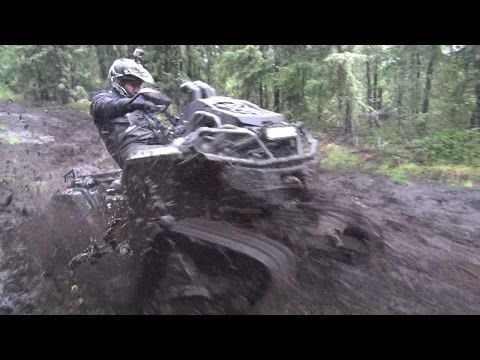 Depending on your gear reduction, you might end up lowering your ATV’s top speed by 10–15%.
Depending on your gear reduction, you might end up lowering your ATV’s top speed by 10–15%.
It’s a win-win if you want to slow your ride a bit.
How to Increase Top ATV SpeedIncreasing your ATV’s top speed is a bit trickier, but there are a few tried and true methods.
The same way that adding weight slows you down, shedding weight can speed you up.
If you’re craving hitting your ATV’s max speed, leave the cooler at home and pack lightly. And when you’re planning upgrades, pay attention to the weight of your bumpers and tires. If you manage to keep your total weight at or below stock, you’ll be flying.
Plus, losing weight is free.
This Sportsman is running stock with no extra weight added. It’ll go just as fast as the manufacturer intended. Installing bigger tires, bumpers, and a cooler can reduce this ATV’s max speed dramatically. If speed is your #1 concern, keep it light!A high gear kit is the opposite of a gear reduction. Instead of giving you more torque, it reduces torque and boosts speed.
Instead of giving you more torque, it reduces torque and boosts speed.
It’s a great way to increase your top ATV speed, but it does make your machine more sensitive to weight. You’ve got to keep it light to burn rubber with a high gear kit.
Larger tires are a no-go with a high gear kit, too. You’d basically have two high gear sets working together and reducing torque so much that you’d only hit your top speed in a salt flat somewhere. Not ideal.
A clutch kit is a great way to eek out extra performance from your ATV’s engine. Clutch kits are designed to optimize your RPM curve so that you’re getting your maximum horsepower for as long as possible as you throttle down. A proper clutch kit can increase your acceleration and top speed.
With a carefully tuned acceleration curve, you’ll have the fastest ATV possible.
Whether you need to make big changes or small, your ATV speed is in your control. Get tweaking, get riding, and see how fast your ATV can go.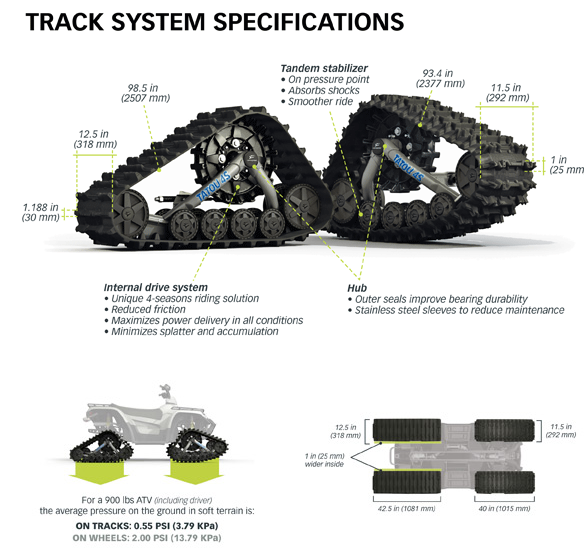
A lot! Tracks are a major financial investment.
Expect to pay somewhere in the neighborhood of $3,000 – $5,000+ (and don’t forget the cost of initial installation).
On the lower end are retailers who specialize in ATV tracks, on the higher end are ATV manufacturers with tracks designed specifically for their vehicles.
No, tracks actually improve stability.
Tracks do increase ground clearance by a few inches, 4” – 7” inches on average, depending on model, but this does not lead to increased instability.
A higher profile would usually make an ATV less stable, but tracks have increased weight at ground level and a wider footprint, so this actually helps improve stability.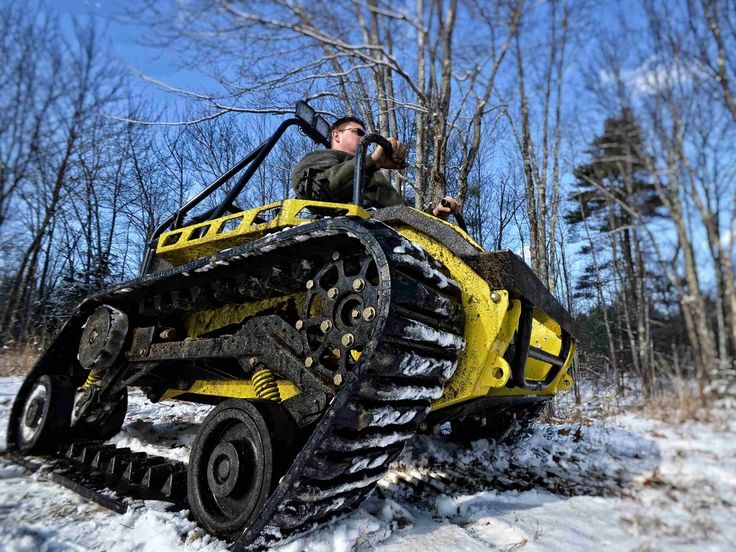
You will initially need to have an installation kit installed. It’s recommended that you have the initial installation done by a dealer/mechanic. The installation kit includes bars, brackets, and adapters that help to secure the tracks in place.
- Advertisement -
Once the installation kit is installed, it’s about as easy as changing tires. Of course, some models are easier than others, so it depends a bit on your ATV. (And also how good you are at changing tires)
The initial installation kit takes approximately 2 hours to install, after that it should take about 1 hour to install/remove all tracks.
This is a hard question to answer. Much like: How long will tires last?
The best answer is a long time. Several years and/or several thousand miles.
Some factors that will influence how long your tracks last include: vehicle weight, how fast you ride, how aggressively you ride and what types of surfaces you ride.
Riding only on snow, keeping them clean and storing them dry will increase their lifespan.
Most tracks perform exceptionally well in mud, sand and rocks. The tracks distribute the weight evenly which provides excellent flotation to keep the ATV from sinking in snow, mud, sand and boggy conditions.
But this performance comes at a price. That price is a shorter life span for your tracks.
You’ll often see tracks being marketed as this ideal all terrain solution, but tracks are best suited for snow. Yes, they can be used on all surfaces, but mud, grit and sand will wear them down faster.
- Advertisement -
Of course, this is true with tires too. Harsh driving conditions are always harder on gear. Traveling over exposed rocks will wear down your tires faster than a smooth hard packed dirt surface.
Although most tracks are designed and advertised as being for use in snow + other surfaces, there are “snow only” designed tracks.
One notable example is the Can Am Apache Backcountry LT designed for the Maverick X3 and Defender. These tracks are specifically for winter snow performance and travel only.
But Can Am does make year round tracks as well – the Apache 360 LT track kit for all terrain.
You’ll get more use out of an ATV than you would out of a snowmobile. Even without tracks!
For snow travel only, a snowmobile is a hands down winner. It’s built with 100% snow travel in mind. The body is built enclosed, so snow doesn’t clump up in the open spaces.
Snowmobiles will also always beat ATVs with tracks when it comes to speed and maneuverability in the snow. They’re just overall better for snow play.
They’re just overall better for snow play.
But ATVs are a clear cut winner in virtually every other way.
ATVs allow you to hit the trails all year long – a snowmobile simply can’t match that.
ATVs also beat snowmobiles when it comes to practical work use.
Snowmobiles can be used on the snow with plows, trailers, snow trail grooming equipment and other accessories, but overall ATV are a more practical work vehicle. Especially if you have a lot of land, a ranch or homestead.
The list of ATV accessories seems almost endless and includes plows, trailers, spreaders, planters, harrows and more.
In most instances the tracks are interchangeable for vehicles, but you will need a new installation kit/transfer kit if you change ATV models.
The main reason they would potentially not work on a new ATV is if the vehicle is a big jump up or down in size.
Expect to pay in the range of $400 – $1,000 for a transfer kit. Expensive, but not nearly as expensive as a whole new track set.
Overall it’s about the same as with tires.
Some exceptions are when traveling very slow, in deep wet snow or deep mud. You will get excellent traction with the tracks in these conditions, but lose a bit of agility and maneuverability.
Your turn radius will also increase with tracks vs tires, so again, a slight loss of overall maneuverability.
Yes, on average expect about a 30% – 50% reduction in your top speed due to gear reduction.
No, tracks are designed to have a lower power requirement than tires.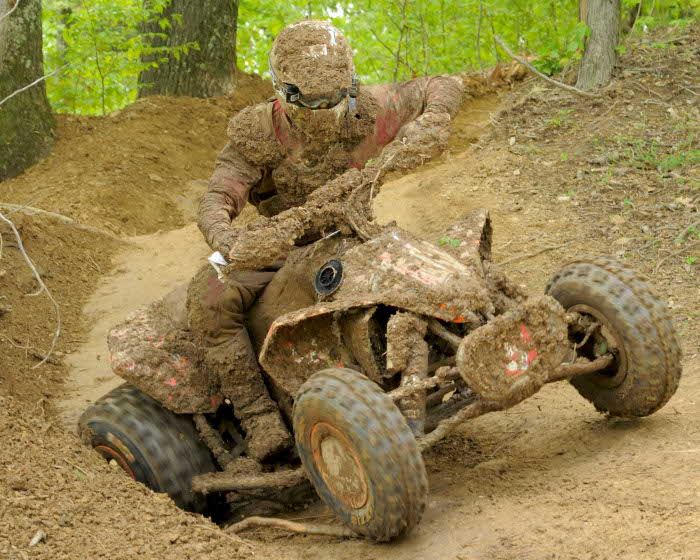
The drive sprockets in an ATV track system are sized to match your ATV engine size.
The undercarriage drive sprocket is about 1/3 smaller than an ATV tire. This gears down the power to a drive ratio that delivers more power to the tracks.
Track systems are designed and geared to optimize speed, improve low end power and prevent clutch and engine overload.
On average, a track system weighs between 60 lbs – 150 lbs. This includes 4 tracks and mounting.
More Ground Contact = Superior Traction + Improved Stability
ATV tracks have more ground contact surface area than tires. In simple terms this means that tracks are longer and wider than tires, so more of the surface area of the track is in contact with the ground.
More ground contact results in better traction and more stability.
Lower PSI = Better Flotation
ATV tracks have a lower PSI than tires. Again, bigger ground contact area means that overall weight is better dispersed. This means that an ATV on tracks will “float” or move better over wet/muddy/boggy surfaces without sinking.
The machine isn’t exactly “floating”, it just has improved weight disbursement.
But, there are limits to flotation. In deep mud (think 1 foot +), tires will out perform tracks. Even with excellent flotation, the combined weight of the machine plus the rider can cause the machine to submerge in the mud and get bogged down.
Tire PSI vs Track PSI
Camso, one of the best known ATV track manufacturers state that ground pressure is reduced on average by 75% using their tracks vs tires.
Chart by CamsoJust like when you buy a brand new ATV, tracks also require a short break in period.
A typical break in period is 4 hours or 50 miles of driving.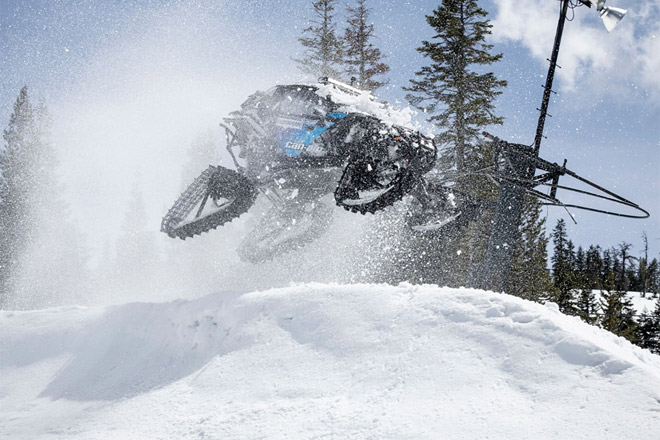
For me, I don’t think they’re worth the money.
But, you may live in a different region and have different needs, so your opinion may be different. That’s OK. It’s a personal choice.
That’s OK. It’s a personal choice.
Don’t misunderstand me, I love tracks and think they’re awesome. But unfortunately, I don’t have unlimited income and tend to look at things somewhat clinically: cost vs function vs fun.
Basically, what’s going to get me the most bang for my buck.
If you have lots of disposable income, then yeah, tracks are a super badass upgrade. They look fierce, they perform well, they’re fun and they extend the riding season.
But they’re very expensive! For the same amount of money or a couple thousand more you could buy a good used snowmobile.
No matter what kind of tracks you put on your ATV, an ATV isn’t built for speed through deep snow. An ATV will never beat a snowmobile for winter fun.
Tracks could potentially be a good investment if you live somewhere where the winters are hit or miss. If some years you get a lot of snow and other years not so much, then a snowmobile might not make sense.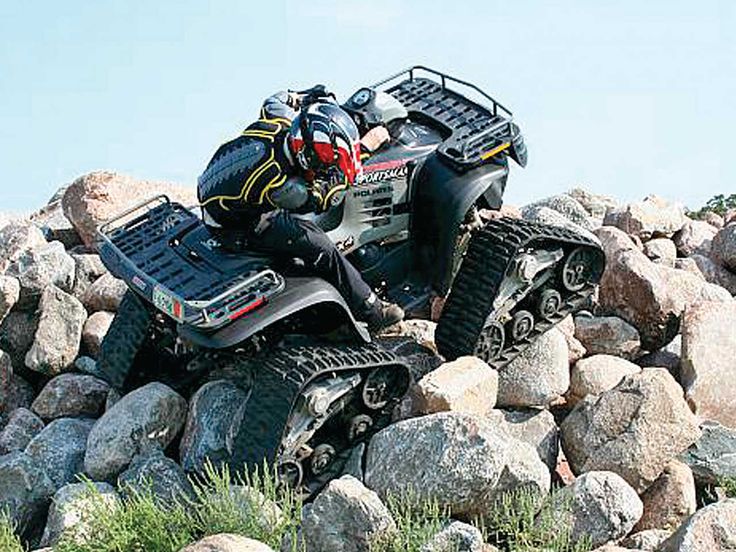
I live in the mountain west where we either get a lot of snow or a ton of snow.
Another area that ATV tracks would be a solid investment is if you use your ATV in the winter for work. If you’re hauling a trailer, moving lumber, towing fishing shacks or doing backcountry work, then tracks make sense.
However, if you’re just looking for winter adventure, you can’t beat a snowmobile, they’re designed to fly through the snow at top notch speed.
This is a user manual with specs and additional information that you may find helpful:
CAMSO ATV T4S FOR ALL-TERRAIN VEHICLES USER MANUAL 2020
Read Next
ATV riding techniques could be the subject of a full book. In the same article, we want to reveal to you the basics of safe riding. At first glance, there is nothing complicated in driving ATVs - you just need to steer and enjoy riding.
When driving over bumps, for example, those of the "wave" type, the driver must change his position all the time. So, when approaching an obstacle, you must shift your body back, otherwise you can hit the obstacle with your wheels. When driving over a bump, you need to move the body back forward, thus preventing excessive separation of the front wheels, i.e. rearing up the ATV. Then, when the rear wheels come off the ground, you need to move back again, otherwise you can fall out of the saddle, hitting your knees on the steering wheel.
So, when approaching an obstacle, you must shift your body back, otherwise you can hit the obstacle with your wheels. When driving over a bump, you need to move the body back forward, thus preventing excessive separation of the front wheels, i.e. rearing up the ATV. Then, when the rear wheels come off the ground, you need to move back again, otherwise you can fall out of the saddle, hitting your knees on the steering wheel.

Moving in a straight line at low speeds (up to 40 km/h), you can afford to relax. But at higher speeds or when passing sharp turns and slopes, the driver must move very actively. Indeed, due to the high center of gravity, short wheelbase and small width, ATVs are very prone to rollovers. In addition, if the motorcycle flies separately from the motorcyclist during falls, then the ATV most often covers the driver. Therefore, in order for ATV riding not to end with serious injuries, it is necessary to study the driving rules and strictly follow them.
ATV rider's weight is an important factor that affects machine handling. By shifting their weight, the driver can unload or load the front or rear of the ATV, thus compensating for centrifugal forces.
The first rule you need to learn is that when riding an ATV, you need to relax your arms. When driving, the driver can always let go of his hands, because his legs are holding him in the saddle. As the speed increases, the load on the legs also increases.
As the speed increases, the load on the legs also increases.
Conventionally, three racks are distinguished. The middle stance is used when driving in a straight line without turning. When opening the gas, the body must be moved forward to unload the hands. Thus, the front strut is obtained. When braking and closing the gas, the body, on the contrary, must be moved back, i.e. take a back seat. By the way, the word "stand" comes from the word "stand", and this name is not accidental. When actively riding an ATV, you do not have to sit. Standing on an ATV lowers your center of gravity. After all, there is a huge difference between the weight on a high saddle and the weight on the footrests. And the effect of moving the body in a standing position is much greater than from fidgeting back and forth on the saddle.
When going through a turn on a motorcycle, it is tilted inward, thus struggling with centrifugal force. But you can't do that with a quad bike.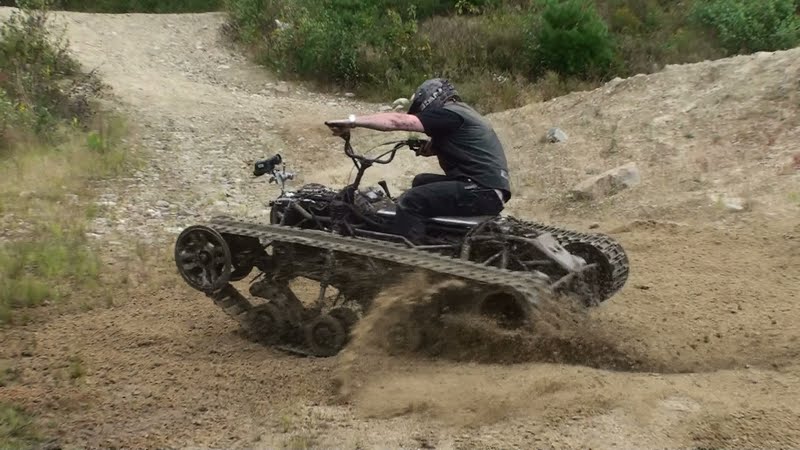 Therefore, it is necessary to use the weight of the driver. The main rule here is to always transfer the weight inside the turn. Moreover, it is necessary not only to tilt your shoulders. It is necessary to hang the entire body, including the fifth point. Only the shin and knee hold on to the saddle. Of course, if you turn at minimum speed, then you can limit yourself to turning the steering wheel.
Therefore, it is necessary to use the weight of the driver. The main rule here is to always transfer the weight inside the turn. Moreover, it is necessary not only to tilt your shoulders. It is necessary to hang the entire body, including the fifth point. Only the shin and knee hold on to the saddle. Of course, if you turn at minimum speed, then you can limit yourself to turning the steering wheel.
The correct stance is characterized by slightly bent knees, elbows set apart, and a slightly arched and relaxed back. Why not stand on straight legs or keep your back straight and tense? Because bent knees allow you to absorb shock coming from uneven terrain. By the way, the force of these blows is sometimes quite enough to knock the driver out of the saddle. A straight tense back under such conditions can lead to injury to the intervertebral discs and even a compression fracture of the spine. Yes, and the internal organs with the wrong fit will have a hard time.
Active ATV riding requires good physical shape. So, in quad schools, the duration of the lesson does not exceed an hour, and at the end of the lesson, students can literally be squeezed out. And riding an ATV off-road is also an activity worthy of training in the gym.
When riding non-sport ATVs, it is best to avoid jumping. Firstly, this way you can break the ATV. Secondly, in order to safely perform such tricks, the ATV motor must have high-torque and fast response to the throttle. If, nevertheless, the jump could not be avoided, then it is necessary to land in the middle stance, but be ready to move to the back. When the wheels touch the ground, you need to slightly open the gas. It is better not to use four-wheel drive when jumping.
Every time you ride an ATV, you need to practice looking into the distance. This is necessary to develop the habit of evaluating the trajectory of movement in advance. Beginners often do not have time to track the road, and at some point they are not ready to perform adequate actions. And another, very predictable obstacle, can become a problem for them.
And another, very predictable obstacle, can become a problem for them.
| When moving along a slope, it is necessary to move the body in the direction opposite to the slope. On the steepest sections, full overhang should be used, such as when cornering at speed.
|
Before you start climbing, you need to pick up speed. Then the resulting inertia will allow you to smoothly drive into the steepness. If you suddenly open the gas directly on the rise, the ATV may tip over. Climbing should be in the most forward stance and on medium gas. If the incline is too steep, the ATV may roll backward when the throttle is released. In this case, you should not brake with the front axle, not the rear. If the ATV starts to roll over, you can try to jump to the side, but this acrobatic stunt is unlikely to be successful.
If the driver moves his torso out of the turn, then his centrifugal forces will pull him to the outer radius, and in order to stay in the saddle, he will need to firmly grip the steering wheel. At the same time, the ATV will definitely try to roll over. To avoid such an unpleasant situation, it is always necessary to remember a simple rule - to shift the body only in the direction of rotation. Those. if we turn to the left, then we shift the body to the left side, and vice versa.
Descents must be made in the C-pillar. In this case, the arms must be extended and slightly bent at the elbows. There is no emphasis on the hands, you can even let them go, holding on with your feet. The steeper the descent, the more the driver must move the body back. The lower photos show the consequences of a descent in an incorrect landing. The main mistakes - the driver shifted the weight forward and pressed his hands to the body.
Articles
02 Dec
Any wheeled vehicle - from a bicycle to a multi-ton truck - has a transmission in its device: a system that transmits rotation from the engine to the wheels. The operation of the transmission - and therefore the speed of driving - can be controlled by shifting gears.
Gear shifting is organized differently in each mode of transport. In the article below, we will tell you exactly how to shift gears on ATVs, and what gearboxes are found on such equipment.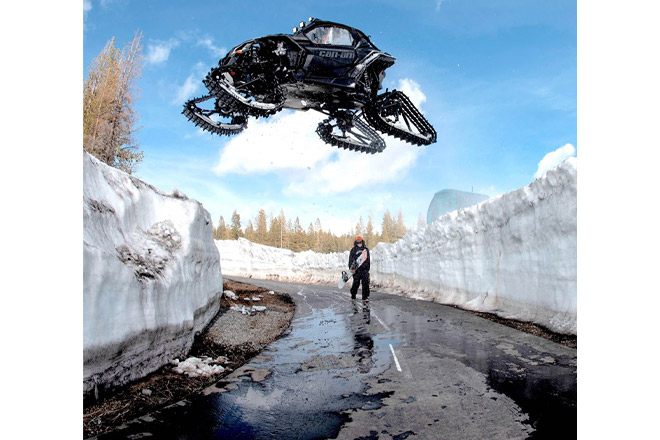
Gearboxes for ATVs can be of two types:
Rare and mostly found in older models, but other variations can be found. For example - "automatic" with the ability to manually shift gears.
Manual ATVs are a little more difficult to drive (at least at first, until you get used to it), but you can more accurately select the appropriate mode.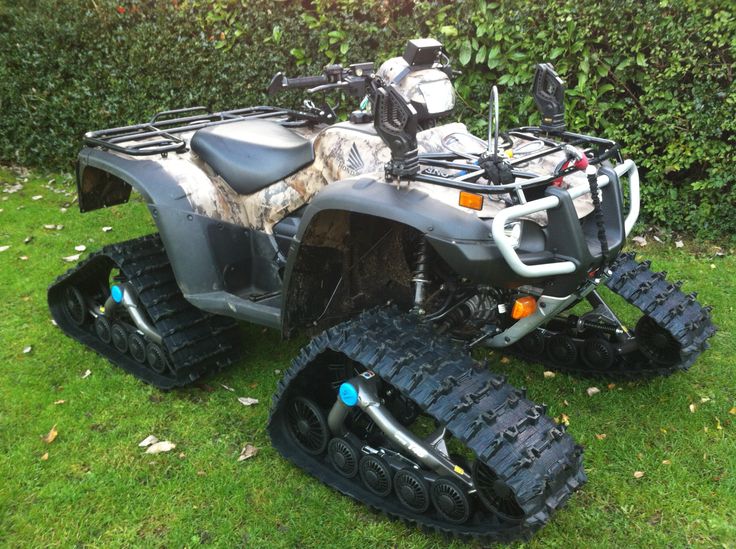 And vice versa: CVT "boxes" are much easier to operate, they are easy to master for a beginner who gets behind the wheel of an ATV for the first time. But on the other hand, with active driving along a route with variable difficulty, riding a CVT will be a little less convenient.
And vice versa: CVT "boxes" are much easier to operate, they are easy to master for a beginner who gets behind the wheel of an ATV for the first time. But on the other hand, with active driving along a route with variable difficulty, riding a CVT will be a little less convenient.
For example: you are driving on a flat packed dirt road on H and you see a large stretch of muddy road ahead with deep mud (or a steep hill, or bumps, or stones). You will have to come to a complete stop and shift to L, drive through mud, and when you get back on a dry road, come to a complete stop again and shift back to H. , like motorcycles, and a manual clutch lever on the handlebar on the left.
The foot lever device can be of two types:
 The rear lever shifts gears up, the front lever shifts down.
The rear lever shifts gears up, the front lever shifts down. The shift itself is carried out in the same way as on motorcycles:
